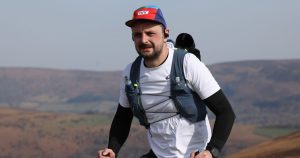The Brutalist, an upcoming film starring Adrien Brody, has generated significant Oscar buzz, placing the spotlight on Brutalist architecture, a style often characterized by its raw, imposing concrete forms. While frequently labeled "ugly" and divisive, Brutalism boasts a robust following, particularly in the UK, where its structures stand as stark reminders of a particular period in architectural history. To understand the potential cinematic appeal of Brutalism and the reason for its resurgence in popular culture, it’s crucial to delve into the movement’s origins, philosophies, and the sociopolitical context that shaped its unique aesthetic.
Brutalism emerged in the post-World War II era, a time of rebuilding and social change. Its name, derived from the French term "béton brut" meaning "raw concrete," accurately reflects the movement’s core principle: honest expression of materials. Architects like Le Corbusier, a pioneer of the style, championed the use of unadorned concrete, celebrating its structural capabilities and eschewing ornamentation. This emphasis on functionality and austerity was seen as a rejection of pre-war architectural extravagance and a reflection of the socialist ideals prevalent at the time. Brutalist buildings, often large-scale public housing projects, universities, and government buildings, aimed to provide efficient and affordable spaces for a society seeking a new beginning. This focus on social utility, however, often came at the expense of aesthetic considerations, contributing to the style’s controversial reception.
The UK, grappling with bomb-damaged cities and a housing crisis, embraced Brutalism with particular fervor. Architects sought to create affordable, high-density housing that could swiftly accommodate the growing urban population. London’s Barbican Estate, the Southbank Centre, and the National Theatre are iconic examples of British Brutalism, showcasing the movement’s grand scale and imposing presence. These structures, with their exposed concrete surfaces, modular designs, and elevated walkways, became symbols of urban renewal and modernist ambition. However, the stark aesthetic also drew criticism, with many finding the buildings cold, impersonal, and out of scale with their surroundings. The concrete itself, prone to weathering and staining, further contributed to the negative perception of Brutalist architecture, leading to its decline in popularity in later decades.
Despite the controversy, Brutalist buildings have developed a dedicated following in recent years. A newfound appreciation for the style’s honesty, functionality, and historical significance has emerged, particularly amongst younger generations. This renewed interest is fueled by various factors, including a growing awareness of the social and political context in which Brutalism flourished. The starkness and monumentality, once seen as negative attributes, are now viewed by some as powerful expressions of utopian ideals and a testament to a period of bold experimentation in architecture. Furthermore, the photographic potential of Brutalist structures, with their dramatic shadows and geometric forms, has captured the attention of artists and photographers, disseminating striking images through social media and contributing to the style’s resurgence in popular culture.
The potential success of The Brutalist can be seen as a manifestation of this renewed interest. By choosing to focus on this often-overlooked architectural style, the film promises to explore themes of social change, urban development, and the enduring power of human creativity. The presence of Adrien Brody, known for his nuanced and captivating performances, lends further credibility to the project, suggesting a serious and thoughtful exploration of the subject matter. The film’s narrative could potentially delve into the lives of architects, construction workers, or residents of Brutalist buildings, offering a human perspective on the impact of this architectural movement and exploring the complex relationship between people and their built environment.
The Brutalist, therefore, represents more than just a film; it signifies a cultural moment, a renewed engagement with a controversial yet undeniably impactful architectural style. By bringing Brutalism to the forefront of popular culture, the film has the potential to spark a wider conversation about our relationship with the built environment, the values we prioritize in design, and the enduring legacy of architectural movements that sought to reshape the world around us. The Oscar buzz surrounding the film not only speaks to its potential cinematic merit but also reflects a broader cultural shift, a renewed appreciation for the raw beauty and historical significance of Brutalist architecture. The concrete giants, once symbols of a bygone era, are finding a new voice in the 21st century, their stories waiting to be told and their significance re-evaluated in light of contemporary concerns about urban planning, social housing, and the role of architecture in shaping our collective future.














